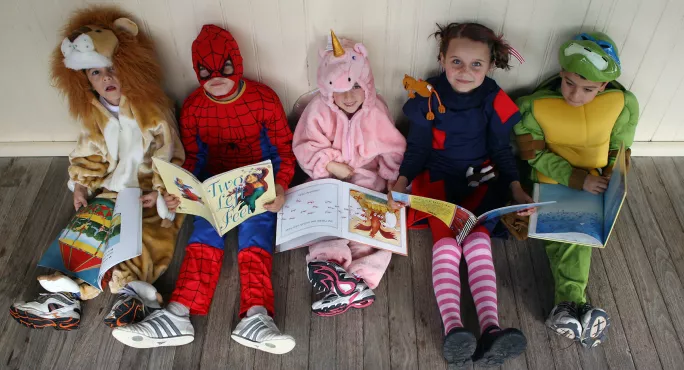- Home
- The 4 secrets of a high-quality text in primary
The 4 secrets of a high-quality text in primary

I am fortunate enough to spend my working days with 28 little sponges, eager to soak up information.
But it’s not a one-way street. Amid the algebra, ancient Egyptians and art, they are also expected to create, producing writing for “a range of purposes and audiences”.
But when asked to write a story from scratch, a lot of children will falter.
Quick read: English: Promoting reading for pleasure
Quick listen: World Book Day: how to make your celebrations more inclusive
Want to know more? How ‘quality talk’ can boost infants’ later academic success
I learned that the hard way when I naively asked my first class of Year 5s to write an entry for the BBC 500 Words competition, without having given them anywhere near enough of an input.
Writing in primary school
The result was 20 stories from the perspective of a dog (thanks to one child loudly announcing that this was a brilliant idea) and six stories that read remarkably like The Hunger Games.
I’ve been an English specialist for five years now and I have found that there is no better way to inspire writing in the primary classroom than by using high-quality texts.
But what makes a quality text?
1. Appeal
It’s imperative to know your children: a class of boisterous, mildly unenthused writers may not be the target audience for a lengthy epic like The Railway Children, but they may well get their teeth into a gritty, dark Shaun Tan picture book.
Likewise, your rural, affluent class of animal lovers would probably love War Horse, but they may struggle to relate to something more urban or harrowing.
2. Magpie moments
There is a reason why authors are authors: they are wordsmiths. And we all want children in our classes to take risks with their word choices.
I’ll never forget the time when one of my most reluctant writers described the atmosphere in his story as having an “eerie sense of foreboding”.
Nearly spitting out my coffee (contained in a child-safe, sealed travel mug), I asked him how he’d come up with it.
“It was in that book you read us last term,” he shrugged. “I don’t know what it means but it sounded cool and a bit spooky.” Awesome.
3. Another world
It is incredibly difficult to place yourself in the trenches of the First World War as a nine-year old child in 2019. It is equally challenging to write about the Ming Dynasty or the Amazon Rainforest or pretend to be an evacuee, and yet we expect this of our pupils.
Quality texts provide readers with an approachable context, making it easier to write from different perspectives and about abstract situations.
Texts that have been incredibly useful for this include (but aren’t limited to) War Horse by Michael Morpurgo, Goodnight Mr Tom by Michelle Magorian (with the added benefit of a film adaptation - texts don’t always have to be books!) and The Great Kapok Tree by Lynne Cherry.
4. A picture tells a thousand words
It’s a cliché but in the context of quality texts, one that couldn’t be more pertinent. Picture books with a few choice words are incredibly effective tools; not only do they create discussion, but they are also significantly more accessible for your less-able readers.
On World Book Day 2018, I selected a picture book with the (slightly ambitious) aim of using it all the way from EYFS to Year 6: Oliver Jeffers’ The Great Paper Caper.
We shared the text as a whole school - it’s a truly wonderful book and the pictures are brilliant - and teachers planned the writing they’d aim to get out of it in their cross-phase partnerships.

As a result, we had Reception children making their own paper, and writing sets of instructions on how to do so; children in Years 1 and 2 writing fact-files about the different animals in the woods and posters advertising the paper aeroplane competition; lower KS2 children writing sequels to the story and apology letters from the Bear and, in Years 5 and 6, pupils writing newspaper articles, police reports and confession statements.
Picture books are accessible to all (although do be careful of darker themes with younger audiences).
A quality text can inspire even the most reluctant of writers and they are essential if we are to coax out the level of writing that the national curriculum expects of children.
Let’s consider reading to be the inhalation of ideas; when we write, we’re simply breathing out.
Philippa Seymour is a KS2 teacher and English specialist in South Gloucestershire
Keep reading for just £1 per month
You've reached your limit of free articles this month. Subscribe for £1 per month for three months and get:
- Unlimited access to all Tes magazine content
- Exclusive subscriber-only stories
- Award-winning email newsletters
